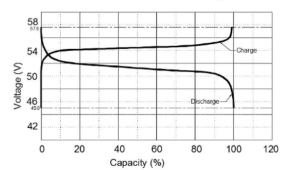TrueNorthSolar
New Member
- Joined
- Oct 19, 2022
- Messages
- 18
Generally speaking, once you integrate battery and PCS comms, you're getting an interactive system where all devices are sharing and reacting to the data and messages each are sending over that bus (typically CAN but Modbus is the norm on large systems). Here are three great examples of the benefits of an integrated system:How does your all integrated solar system operate?
1) Accurate battery info for the PCS to act on: Let's use SOC, every decent Li battery has a BMS that's calculating SOC based on VPC and current in real-time. The only means that an inverter has to approximate SOC is through a shunt doing coulomb counting (inaccurate with the tendency to drift), but usually, they're just making a guesstimate based solely on VDC at their terminals. If the battery can relay that status to PCS on a comms bus, the PCS can make decisions like genstart/stop, grid-sell, LBCO etc.. with accurate triggers.
2) System Monitoring: The PCS is and always should be the manager of system-level monitoring. They are the hub for all sources and uses of power, and this is why every decent inverter brand has a great cloud monitoring platform. Since the PCS owns the monitoring, it's critical that detailed, accurate battery data is collected and logged in that central monitoring platform. Again, without closing the loop, all you'll see for the battery is VDC and current that can be gathered by the inverter at its terminals. You won't get fault/warning history, device info like S/N, fw rev, SOC, number of devices in the array, etc...
3) Leader/Follower capability: Normally, it's the PCS acting on the battery, but when you've got comms integration, the BMS has the ability to set target voltages dynamically based on the real-time state of the cell block (cell spread, temp, SOC, etc...) which extends the life expectancy of the battery in the long-term and reduces recharge time but up to 40% within any single charge cycle.
Bottom line: systems need to be comprised of components that can communicate with one another.



